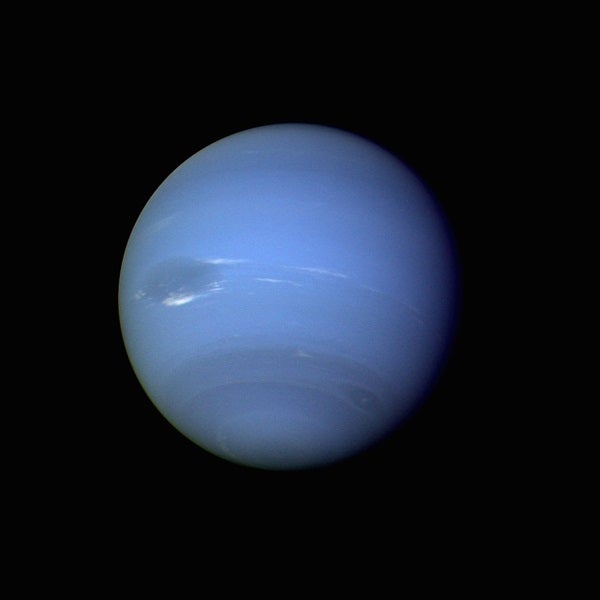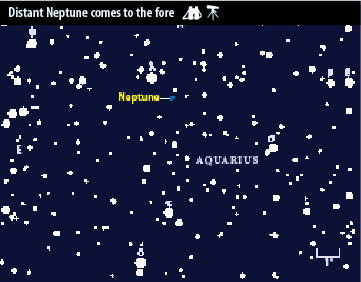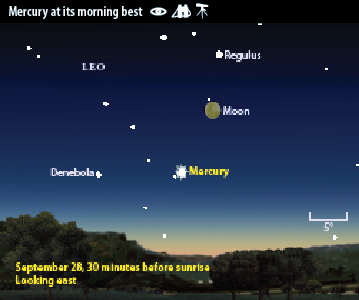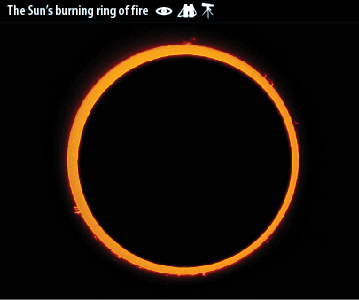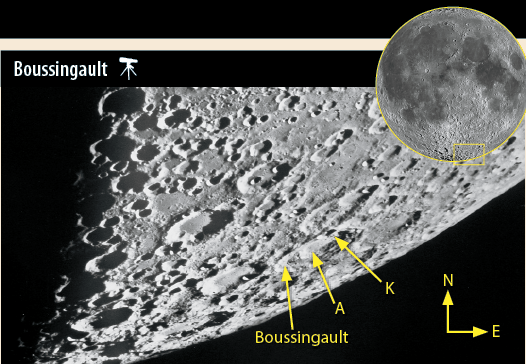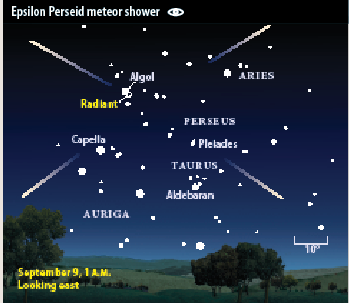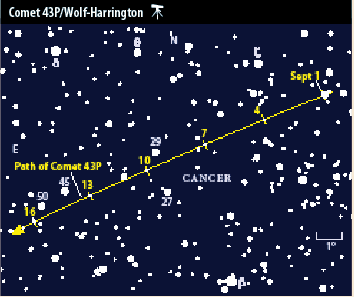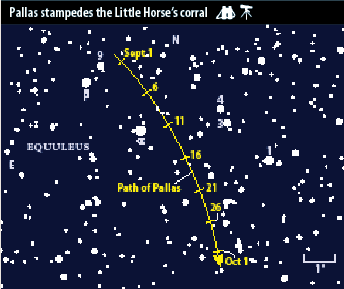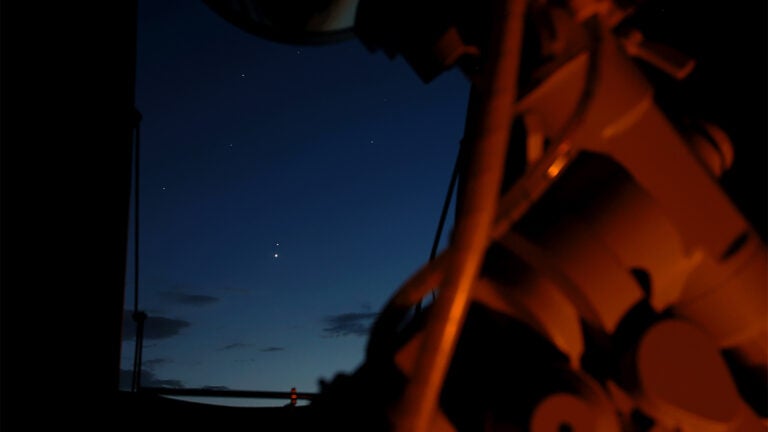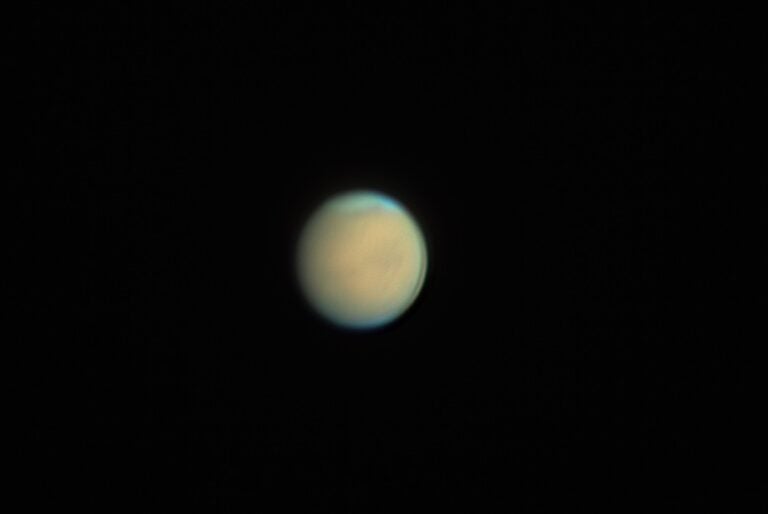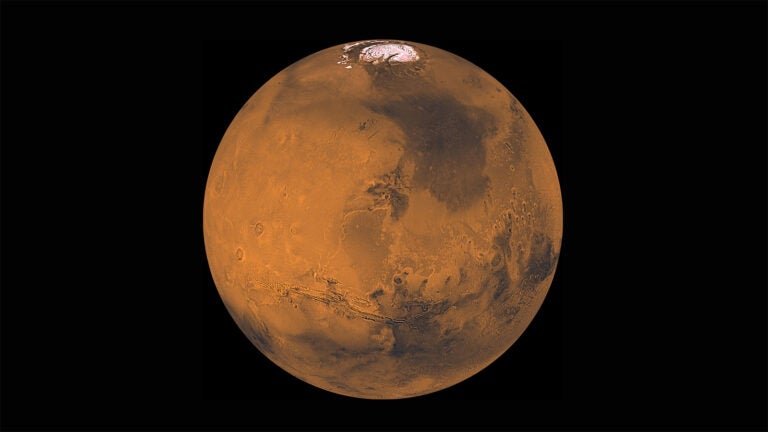Mars and Saturn rule September’s evening sky. They shine brightly and provide observers lots of telescopic detail. They stand out in part because the two brightest planets — Venus and Jupiter — set soon after the Sun does.
The overnight hours belong to Neptune, which reaches opposition and best visibility early this month. And shortly before the Sun rises in late September, Mercury puts on its best morning show of 2016.
You’ll need to be watching the western sky during evening twilight to catch Venus and Jupiter. After their majestic pairing in late August, the two brilliant planets gradually move apart. Sluggish Jupiter soon loses its battle with the steadily advancing Sun and slides behind our star on September 26. Venus, on the other hand, outpaces the Sun and climbs higher with each passing day.
You might spot a slender, two-day-old Moon about 1° to Jupiter’s left on September 2. The planet shines at magnitude –1.7 and should be easier to see against the bright twilight. You’ll need an unobstructed horizon to view the pair, which stands only 4° high a half-hour after sunset. Start at Venus — at magnitude –3.8, it’s the most conspicuous of the three — and then scan the area between it and the brightest area of twilight with binoculars.
The following evening presents an even prettier scene. The Moon, Venus, and Jupiter then form a line spanning some 14°, with Venus midway between the other two. All three lie in Virgo, though you’ll have difficulty seeing any of that constellation’s stars in bright twilight.
As Jupiter slips out of view during September’s second week, Venus grows more prominent. On the 17th, the inner planet passes 3° north of Virgo’s brightest star, 1st-magnitude Spica. And on the month’s final day, Venus exits Virgo and enters Libra.
Despite its appeal to naked-eye and binocular observers, Venus offers little to telescope owners. The world shows an almost fully illuminated disk whose apparent diameter grows from 11″ to 12″ this month.
Once Venus sets, look to the southwest and its trio of bright objects. Mars shines brightest, followed by Saturn, and then Scorpius’ brightest star, Antares. The three form an attractive triangle that changes shape weekly.
As September dawns, Mars lies in northern Scorpius some 5° east of Antares. The two ruddy objects make a lovely pair throughout the evening hours. At magnitude –0.3, the planet appears nearly four times brighter than the magnitude 1.1 star. (Saturn, which stands 6° northwest of Mars, shines at magnitude 0.5.)
September 1 is the only day this month when Mars resides in Scorpius. The Red Planet enters Ophiuchus on the 2nd for a three-week stay. Pay particular attention to this region when the First Quarter Moon passes through on the 8th and 9th. Mars crosses into Sagittarius on the 21st and makes a beeline toward the Lagoon Nebula (M8). The planet passes 1.5° south of this striking star-forming region on the 28th, creating a marvelous photo opportunity.
Mars pulls away from Earth during September, and the ruddy world’s disk shrinks from 10.5″ to 8.8″ across as a result. Observers who target the planet through a telescope will get some of their last great views during this apparition. The first thing to notice is that the disk doesn’t appear perfectly round. Mars shows its maximum phase effect in September as the Sun illuminates only 85 percent of its Earth-facing hemisphere.
Next, pay attention to fine surface details. For North American viewers, Syrtis Major appears centered during September’s first week. This feature is the most conspicuous dark marking on the planet. By the month’s third week, the huge volcanoes on the Tharsis ridge lie on the western limb. Although most amateur instruments can’t show them individually, look for the bright clouds or mist that tend to form around the high mountain peaks. In late September, the dark Aurorae Sinus and Mare Acidalium take center stage.
Once you’ve scanned Mars for subtle surface details, swing your telescope toward Saturn and its dramatic ring system. As you slew from one planet to the other, remind yourself that the ringed planet lies about 10 times farther away. This will add valuable perspective when you see that Saturn’s disk spans 16″, nearly double that of Mars. Saturn is truly a giant, and its beautiful ring system adds to this perception. The rings measure 37″ across and tilt 26° to our line of sight.
Also notice Saturn’s family of moons. Titan, the biggest and brightest, shines at 8th magnitude and shows up through any telescope. You can find it due north of Saturn on September 9 and 25 and due south of the planet on the 16th.
A 4-inch scope brings in four additional satellites. The most intriguing of these is Iapetus, which glows brightest (10th magnitude) on September 8 when its ice-covered hemisphere fully faces Earth. It then lies 8.3′ west of Saturn. Although Iapetus has faded by a magnitude when it passes 2.1′ due north of Saturn on September 28, its proximity to the planet makes it easier to spot. Use Titan, which then lies 2.6′ east of the planet, as a distance guide.
Three 10th-magnitude moons circle Saturn inside Titan’s orbit. Tethys, Dione, and Rhea all lie within 1′ of the rings’ outer edge and show up on every clear night.
Hunt for Pluto in the hour after darkness falls. The dwarf planet then lies reasonably high in the south-southwest among the background stars of northern Sagittarius. Pluto glows dimly (magnitude 14.2), however, so you’ll need an 8-inch or larger telescope to see it visually. The distant world lingers some 0.5° northwest of 4th-magnitude Omicron (ο) Sagittarii. To confirm a sighting, sketch or image the field of view and return to it a few nights later to identify the object that shifted position.
Neptune reaches opposition on September 2, rising with the faint stars of Aquarius just as the Sun sets. Although this marks the peak of the outer planet’s apparition, you’ll be hard-pressed to see much difference the rest of the month. Neptune shines steadily at magnitude 7.8 and moves slowly relative to the background stars. You can track down the ice giant through binoculars in the same field of view as 4th-magnitude Lambda (λ) Aquarii. Neptune lies 1.3° southwest of Lambda at opposition; the gap grows to 2.0° by late September. Don’t confuse the planet with a similarly bright star that lies 0.4° north of it early in the month.
Although Neptune lies closest to Earth at opposition, it’s still 2.69 billion miles away. So, even though it’s four times larger than our planet, a telescope reveals a disk just 2.4″ in diameter. Neptune’s orb glows with a subtle blue-gray hue.
Uranus rises as evening twilight fades and stands high in the southeast at midnight local daylight time. You’ll need a reasonably dark sky to trace the faint lines of stars that define the planet’s home constellation, Pisces the Fish. Once you spy them, it’s pretty easy to find Uranus through binoculars. Under excellent conditions, keen-eyed observers can spot the magnitude 5.7 planet without optical aid.
Use 5th-magnitude Mu (μ) Piscium as your guide. In early September, Uranus lies 2.5° due north of Mu. Although the separation barely changes during the month, the planet moves to
a position more northwest of the star. Point your telescope at Uranus and you’ll see a distinctly blue-green disk measuring 3.7″ across.
The final planet appears as twilight starts to paint late September’s predawn sky. Mercury passes between the Sun and Earth at inferior conjunction on September 12 and then springs into the morning sky 10 days later to start its finest morning appearance of the year. On the 22nd, it appears 8° above the eastern horizon a half-hour before sunrise. Shining at magnitude 0.9, the innermost planet shows up clearly through binoculars, and to the naked eye once you’ve spotted it. A telescope reveals an 8.6″-diameter disk that’s just 21 percent lit.
Mercury brightens quickly as it approaches greatest elongation September 28. That morning, it shines at magnitude –0.5 and climbs 11° high in the east 30 minutes before sunup. Through a telescope, the planet appears 7.1″ across and half-lit. The following morning, a slender crescent Moon slides 1° below Mercury.
An annular solar eclipse occurs September 1 across parts of central and southern Africa. Because the Moon is on the outer part of its orbit, it covers only 98.7 percent of the Sun, so observers must use a filter to protect their eyes during the eclipse. The path of annularity tracks from Gabon to Mozambique and then to Madagascar. At maximum eclipse in southern Tanzania, the annular phase lasts 3 minutes and 5 seconds.
A pair of nested craters in the deep south
It’s not hard to find similar craters located side by side or small ones inside much larger ones. Such combinations show up seemingly everywhere on the Moon. But where can you find one crater nestled inside another? The best example lies near the Moon’s southeastern limb. Boussingault Crater shows up nicely from September 4–18, essentially whenever sunshine illuminates it.
At first glance, Boussingault might look like a terraced feature. (In many large craters, the inner walls slumped inward to create terraces in the impact’s immediate aftermath.) But after a few seconds, you’ll notice it has a distinctly different appearance. Terraces don’t have raised rims like the inner crater Boussingault A. There’s no central peak here either. The original one got wiped out by the second impact, and then lava pooled up from below to cover the mountaintop. Boussingault K, a small, sharp-edged crater that adorns Boussingault’s northern rim, clinches the identification.
The region’s far-southern latitude sustains shadows for many days and keeps the crater’s double nature distinct from the hundreds of other features in these rugged lunar highlands. These shadows help give the crater a 3-D appearance that might make you feel as if you’re in low lunar orbit.
Compared to our view this month, the picture above peers just beyond the lunar limb. The Moon’s face nods up and down slightly because our satellite’s orbit carries it a bit above and below Earth’s orbit around the Sun, the ecliptic. Astronomers snapped the photo when the Moon was north of the ecliptic, revealing a little beyond its normal southern limb.
A second shower from Perseus
Although September doesn’t boast any major meteor showers, two minor ones are worth keeping an eye on. The Aurigids peak the night of August 31/September 1, and the early morning hours of the 1st could deliver up to six “shooting stars” per hour. Observers have reported a few bursts in the past, most recently in 2007, though astronomers don’t expect any enhanced rates this year. Still, the New Moon on September 1 makes for ideal viewing conditions.
The month’s second shower is the Epsilon Perseids, which peaks the morning of September 9. The First Quarter Moon sets before midnight local daylight time, so dark skies rule before dawn. The meteors radiate from a point near Algol, which climbs nearly overhead just before twilight begins. Barring an unexpected outburst, observers can expect to see an average of five meteors per hour.
| WHEN TO VIEW THE PLANETS | ||
| Evening sky | Midnight | Morning sky |
| Venus (west) | Uranus (southeast) | Mercury (east) |
| Mars (south) | Neptune (south) | Uranus (southwest) |
| Jupiter (southwest) | Neptune (west) | |
| Saturn (southwest) | ||
| Neptune (southeast) | ||
A view from across the solar system
Most people would rightly suspect that crabs have little to do with amateur astronomy. So it’s only a coincidence that this month’s comet shares some properties with these bottom-dwelling crustaceans. First, Comet 43P/Wolf-Harrington resides in Cancer the Crab during September’s first half. Second, this periodic visitor swims in the thicker parts of Earth’s atmospheric ocean in the hour before dawn. To see this 12th-magnitude snowball, you’ll need to observe from a dark, haze-free site with a clear view to the east. An 8-inch scope should capture the comet.
Once you’ve arrived at its plotted position, familiarize yourself with the surrounding star pattern. This will serve as an anchor when you bump up to medium power. Then, using averted vision, scan around the field for a small, ghostly cotton ball. Try gently nudging the scope to create movement and trigger your motion-sensitive peripheral vision.
Typical observers can expect to view a short-period comet like Wolf-Harrington during a few returns to the inner solar system. But Japanese amateur astronomer Kazuo Kinoshita calculates that 2016 could bring our final visual sightings of 43P. A relatively close approach to Jupiter in 2019 likely will alter the comet’s orbit, almost doubling its distance at closest approach to the Sun and dropping its peak brightness by a couple of magnitudes.
Max Wolf discovered this comet in 1924, but it wasn’t recovered until Robert Harrington spotted it in 1951. Researchers didn’t link the two comets until its next return in 1957, when it became the 43rd known periodic comet.
Galloping through the Little Horse
Unusual objects are good for astronomy — outliers help to test theories and provide valuable context for typical bodies. Asteroid 2 Pallas serves as a good example. When German astronomer Heinrich Olbers discovered it in 1802, many scientists hailed it as a second chunk of the “missing planet” once thought to orbit between Mars and Jupiter. Its large inclination to the ecliptic (the orbital plane of the solar system’s other planets) seemed to bolster the now-disproven idea of a catastrophic breakup.
Pallas’ 35° orbital tilt carries it from far south of the ecliptic to its current home in Equuleus the Little Horse well to the north. This constellation tends to be overshadowed by its neighbor and big brother to the east, Pegasus the Winged Horse. Both constellations ride high in the south during late evening.
Pallas begins September in east-central Equuleus. It then drops southward, passing just south of three 9th-magnitude stars on the 9th. To positively identify Pallas, look for its displacement relative to this background over a night or two. The 325-mile-wide asteroid then slides 1° west of 4th-magnitude Alpha (α) Equulei on the 11th.

